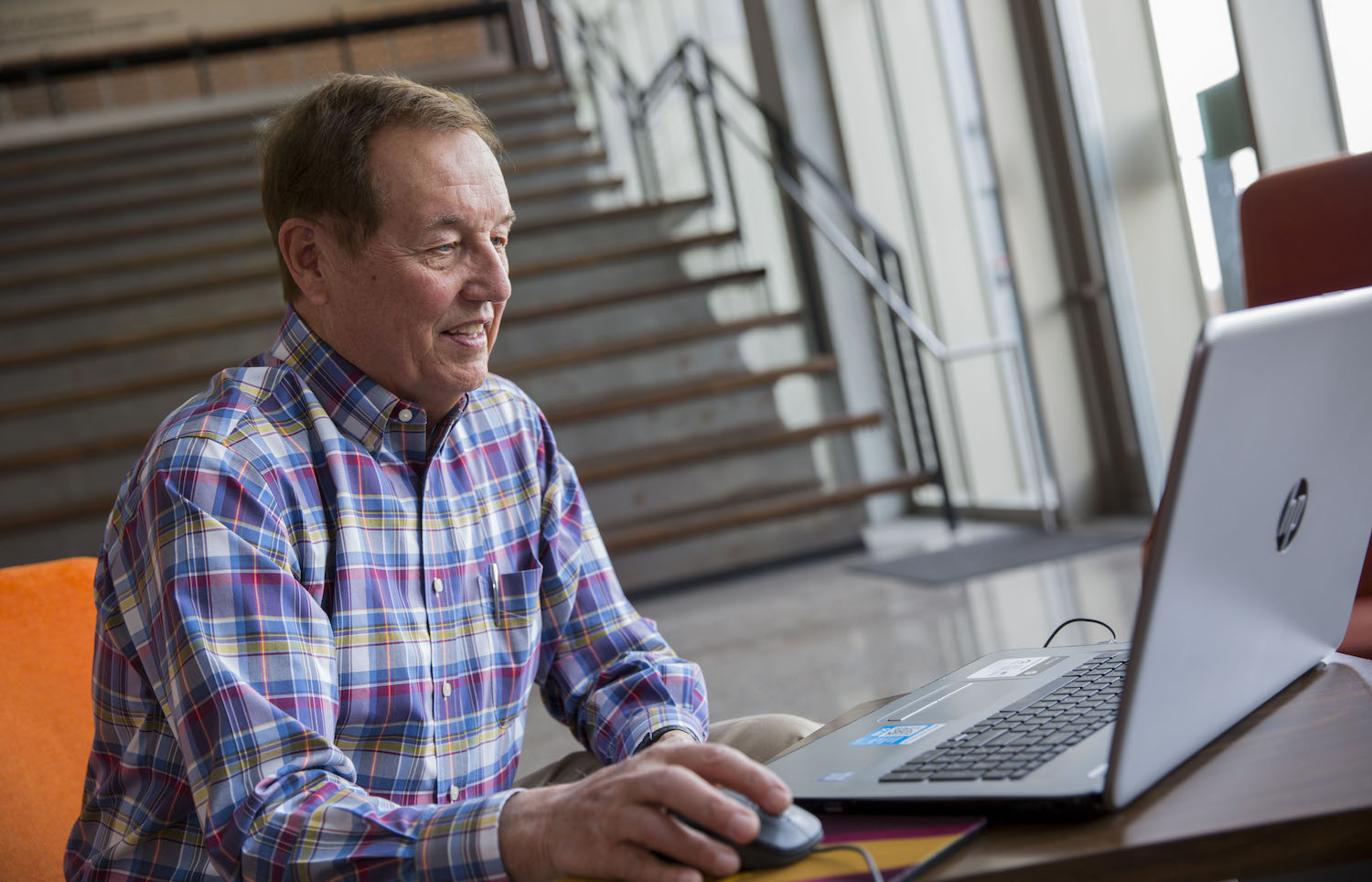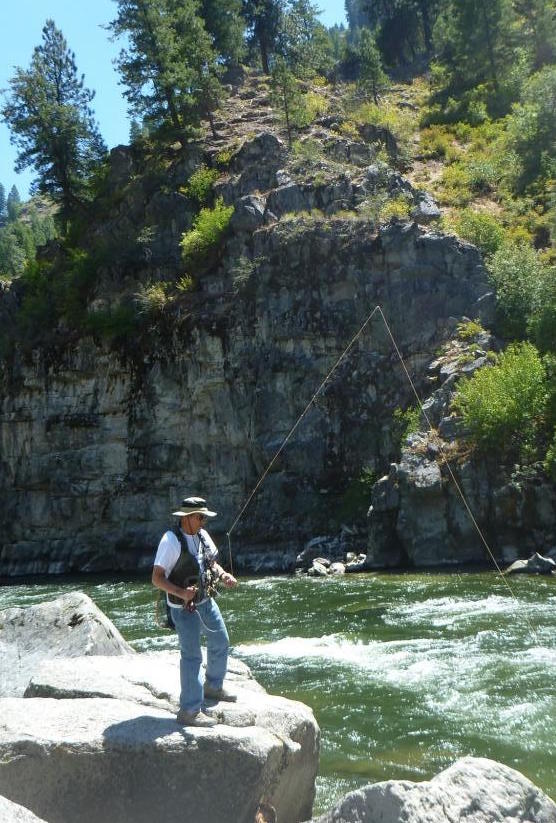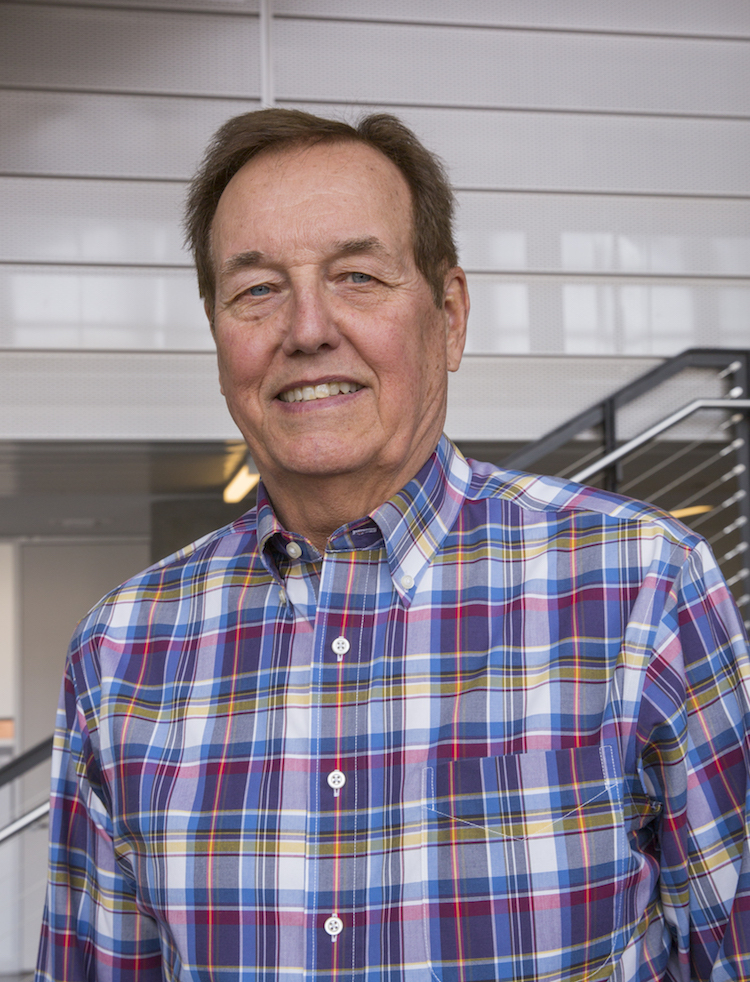
Gone tutoring: Retired engineer helps students reel in success

Above: Arizona State University structural engineering alumnus John P. Nerison, PE, volunteers his free time by tutoring students from across the country online. He wants to give back to the engineering profession and community by helping more students thrive in their engineering education. Photographer: Jessica Hochreiter/ASU
As his retirement approached, John P. Nerison, PE, knew he wanted to give back with volunteer work — and not only fish on Idaho’s beautiful rivers, though he does that, too. He found a way to continue to use his passion for structural engineering and pay back the profession in the form of tutoring.
“The engineering profession is really important to society and a robust economy,” says Nerison, an Arizona State University alumnus. “I believe we should try to incubate more engineers.”
Part of the solution to creating more engineering professionals is helping them get through their difficult science and engineering courses.
“The objective is to get students to junior year,” Nerison says. “Once they get to junior standing, there’s a high probability they will finish. I like to say I make engineering freshmen and sophomores into juniors.”
His experience in the field also helps him encourage students to stick with learning the theories they must master before they can start their core engineering courses in junior year. Nerison shows students examples of how they’ll use a concept in future courses. For example, he’ll tell students they’ll use dynamics in machine design, or mechanics of materials in steel design.
Though engineering majors can be difficult, they also can be enjoyable — Nerison in particular enjoyed his engineering mechanics courses in college — and start young people off into rewarding, lifelong careers.
Nerison has fond memories of his structural engineering graduate studies at ASU, a program that would later become part of the Ira A. Fulton Schools of Engineering.
“ASU was a great school for getting a graduate degree in engineering,” Nerison says of his time studying in the early 1970s. “The professors built relationships with their graduate students. It was intense, but fun, to work through upper-level engineering courses with them.”
Nerison applied his knowledge to a long career as a structural engineer.
When he relocates from Idaho to Arizona each winter, he is reminded of his early career in the 1970s. He worked with companies who did iconic engineering projects in the Valley, including Sun Devil Stadium expansions and the arch structures on the Renaissance Phoenix Downtown Hotel, which was then the Adams Hotel.

Nerison also spends his retirement traveling with his wife and fishing in Idaho’s beautiful rivers in the summer. Photo courtesy of John P. Nerison, PE
Over the years, he enjoyed working on a variety of different buildings and structures, including multistory buildings, commercial buildings, power generation and pulp/paper plants and tall-guyed communication. Nerison worked on these projects with Arizona utility Salt River Project and California utilities Southern California Edison and the Los Angeles Department of Power and Water in addition to other private-sector companies. He considers work on substations and power lines with POWER Engineers his best job.
“Each endeavor had its own unique requirements and it was rewarding to address new challenges,” Nerison says.
During the last seven years of his career, he started providing free online tutoring to engineering and construction majors across the country. Now, a little over one year into his retirement, he has tutored almost 150 students.
“Using my engineering knowledge to help others was an ideal answer for [my retirement],” says Nerison of his decision to volunteer as a tutor. “Working with students also gives me great satisfaction. Shortly before retiring, I decided to make a larger commitment to tutoring students as a volunteer activity.”
He now helps students address the challenges of their education, ranging from specific problems, overviews of particular concepts, reviews of homework, quizzes or tests, and preparation for finals and Fundamentals of Engineering Exams. He creates webinars to review specific topics as well as one-on-one emails, calls and video chats tailored to student needs.
Sometimes he’ll also help students before they even begin a course. For example, if a student is about to start a calculus course, but it’s not one of their strong subjects, he’ll go over the first few chapters of the textbook to help that student start off strong.
It’s rewarding to him to see students get an idea or concept for the first time, Nerison says.
“It’s like lighting up a Christmas tree,” he says. “It’s happier when the lights come on.”
When Nerison hears students did well on a test or got good grades, “that’s probably the best thing,” he says, adding he also likes to hear feedback on whether his suggestions helped.
His flexible schedule as a retired engineer is an added benefit for students, as he doesn’t hold specific hours and can help address students’ questions on their schedules. This can be especially helpful for nontraditional or online students — including working adults studying for their degrees or FE Exams and active members of the military, such as an ASU Online electrical engineering student stationed in San Diego with the U.S. Navy whom Nerison recently helped with career advice.
Drawing on experiences from a more than 40-year career in their field of study is helpful as a tutor, Nerison says.
“Engineering practice reinforces your knowledge of the subject matter and often provides additional ways of looking at problems,” Nerison says. “Many courses in math, science and engineering have common core concepts that relate to each other, so your direct experience can apply to other technical areas that you didn’t use during your career.”
He hopes to continue to expand his tutoring work with ASU students and others around the country who could use his expertise to launch themselves into their own rewarding engineering careers.

John P. Nerison, PE
Studying structural engineering at ASU in the early 1970s
“Studying and the regimen of being a student has changed a lot,” says Nerison, who earned his master’s degree in structural engineering from Arizona State University in 1975.
One major area of change, Nerison says, is the textbooks. While they cover similar content, their delivery has changed significantly. Narrowing down the amount of learning resources and methods and using them wisely can be a big challenge for today’s students.
“The basic resources in the ’70s were your textbook and your professor. Sometimes you worked with fellow students,” Nerison says. “Today there are comprehensive write-ups, illustrations, exhaustive sets of problems, online resources, videos and internet resources. And the universities encourage study groups today. Discussing material in study groups may help the challenge in processing the exhaustive amount of content available.”
And just as we see students with laptops all over campus today, working on computing assignments has changed even more significantly. Gone are the days of the large ASU mainframe computers that ran off IBM punch cards.
“Computing was quite a bit different in the ’70s,” Nerison says. “You would drop off your punch cards at the computing center and then chill out somewhere for an hour or so and go back for the results of your program. One error in a punch card would require another run and another hour of chilling out. Laptops now can do everything a mainframe in a big room could do then!”



































